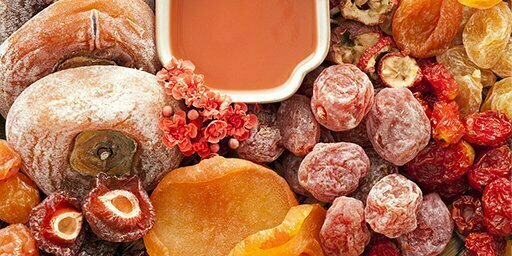Using the fruit and vegetable dryer without changing the color and taste of fruits and vegetables
Microwave drying directly acts on converting the medium molecules into heat energy. The microwave has the permeability properties that can heats the inside and outside of the medium without heat conduction. Therefore, the heating speed is very fast. For materials with low moisture content, the drying speed is further greatly shortened. Regardless of the shape of the object, the medium of the object can be heated inside and outside at the same time. The temperature difference between the inside and the outside of the material is small, and the heating is uniform. The phenomenon that scorched outside and underdone inside will generally not happened, and the drying quality is greatly improved.
The drying processing of fruit and vegetable dryer generally adopts three methods: natural air drying, hot air drying, and freeze drying. Dehydrated vegetables can be used in various fields of food processing, which can improve the nutritional content of the product, improve the color and flavor of the product, and enrich the variety and structure of the product.
Most of the traditional vegetables such as mushrooms, fungus, etc. are mostly adopt natural air drying method, while leafy vegetables mostly use freeze drying method. Green beans, broccoli, cabbage, carrots, garlic and garlic powder are mainly dried by hot air drying or freeze drying. The dried osmanthus can be used to make tea, and can be used as medicine as well. It is also a necessary spice for many food snacks. In the season when the fragrance of osmanthus overflows the surroundings, many people always like to make dried osmanthus at home. Many people think it is very simple to drying osmanthus, because they usually just put the fresh osmanthus flower to dry on the balcony. This approach is wrong. Osmanthus can keep the fragrance only after totally drying.
The raw materials, such as apples and pears, should to be peeled. The purpose of peeling is to maintain the taste of the product while maintaining the consistency of the product shape. The peeling methods include hand peeling, lye peeling, hot peeling, etc. Typical peeling equipment includes professional peeling machines such as dehydration peeling machine, lye peeling machine, friction peeling machine, etc. The lye peeling machine has high peeling efficiency without damage during the peeling process. At present, most companies use hot lye in the raw materials to soften the epidermis, and then use a peeling device and high-pressure cold water to spray the raw materials to separate the epidermis and fruit meat. The function of the conveying device is to use the conveyor belt to convey the raw materials one by one.
The fruit and vegetable dryer studied the usage of green protective agent and found that acid pheophytin, under appropriate conditions, replace the magnesium atoms in the structure with copper, zinc, iron plasma (ie green protective agent). It not only maintain and restore the green color of the fruit, but also can replace the chlorophyll produced later. In addition, copper ion is an enzyme inhibitor, which can inhibit enzymatic turns browning, which is beneficial to the preservation of the color. Without doubt, it may also include other complex factors and changes. The method of the green protective agent is to replace the magnesium atoms in the chlorophyll structure with copper, zinc, and iron plasma. Usually, the green protection can be completed by heating and immersing for a few minutes. The method is very simple and efficient. In addition, the green agent solution can be used continuously for 2 to 3 times, and the cost is low.
Heated vegetables with pH value slightly higher than 6.5-7.0 are easier to preserve fresh green. The temperature and time of thermal bleaching are different according to different vegetables. If the temperature is too high and the time is too long, the green color disappears and pheophytin is formed. In order to increase the pH value, reduce the formation of pheophytin, and maintain the color of the vegetables, green vegetables are treated with lime water or magnesium hydroxide before processing. However, too much alkali will damage the tissue and flavor of the plant. In addition, chlorophyll is stable in low temperature and dry state. Therefore, vegetables after dehydrated and dried which stored at low temperatures can keep fresh and green.
In order to improve the boiling resistance and brittleness of the raw materials, and to prevent it from becoming rotten during the sugar cooking process, the hardening treatment is usually carried out before the sugar cooking process. Soaking the raw materials in a dilute solution such as lime for a proper time to achieve solidification, so that the selection, usage amount, and processing time of solidification could be appropriately finished. If it is not determined by experiments, excessive calcium salt may be formed, or some of the cellulose may be calcified, which may result in the quality of the product becomes rough. The solidified raw materials need to be rinsed before being made into sugar products, and the tanks and bubbling rinsing machines should be soaked as well.



